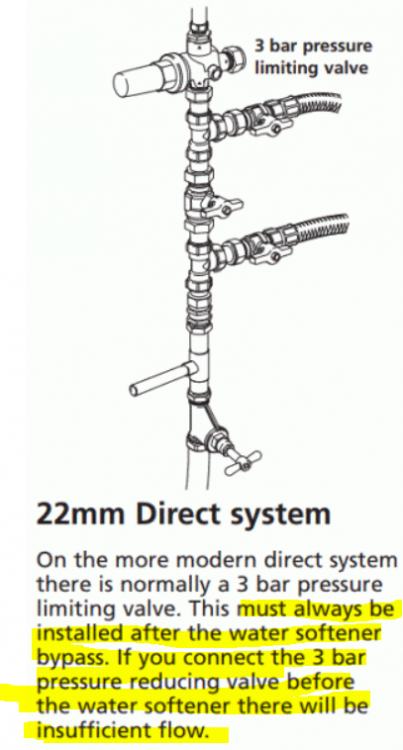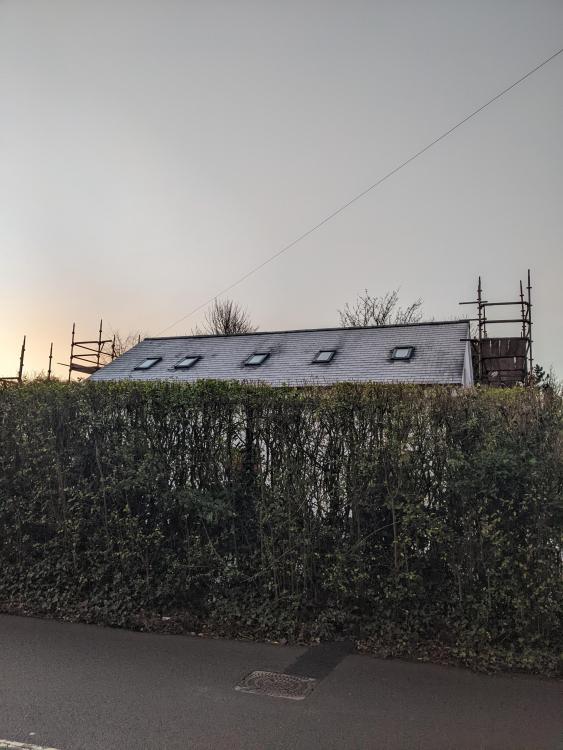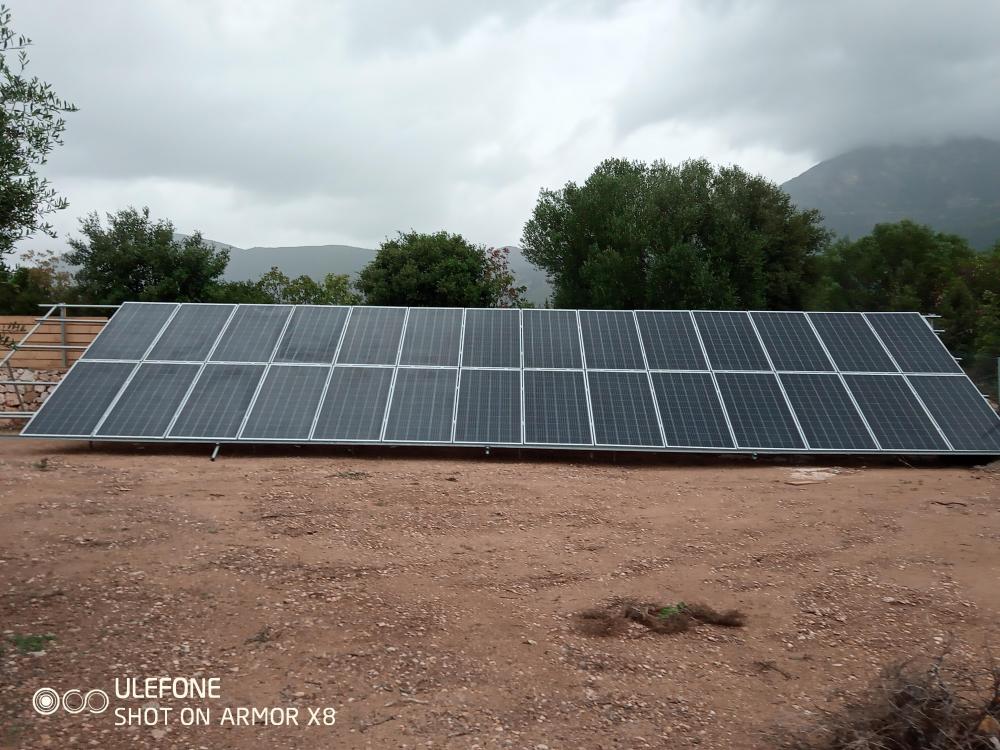Leaderboard
Popular Content
Showing content with the highest reputation on 02/11/22 in all areas
-
What is perverse about this is that the UK privatised north sea oil and gas and we're actually exporting gas right now. Because of the financial arrangements the government has with the oil conglomerates, we don't even benefit finanically from this natural resource. Norway at least has a much better long term strategy by investing its returns into a national wealth fund. All we've done since we found our resources in the north sea is squander it and sell it off for short term one off payments while at the same time paying large subsidies to bank roll decommissioning etc. The volatility and fuel poverty we're experiencing is fundamentally down to poor policy, short termism, value extraction, etc. not fuel and energy resource. Further extraction won't benefit the larger population at all, certainly not long term.4 points
-
@nod you need to come back to this, he seriously needs your help. @pocster wait for nod, ignore all other stupid comments unless they involved mf metal ceiling stuff. Its like metal stud walling but for a ceiling. Hang on he will be back soon.2 points
-
I have always used deep flow gutter by default, for small increase in cost it just makes sense, even on smaller roofs. I find that it allows for a much better roof gutter transition, allowing a deeper overhang into the gutter, I find it copes better in this increased heavy, more frequent rain we receive and I find that it copes better with some debris without impacting flow. Our original house roof on the north side is quite mossy, during heavy heavy rain last summer most was washed into the gutter, even during the heaviest sort of 1:100 year rain, the gutter still coped while neighbours had water overshooting the gutters and battering down over their windows and doors. I also think it looks better as it creates a much more bold line between facia and roof and helps to hide any little roof edge defects such as undulating edge etc. I would only use normal stuff on my shed.2 points
-
2 points
-
Bet the insulated the roof as far as the loft ceiling and didn't bother putting any into the loft/ridge. I know the builder he's a good guy, high quality work and does higher end stuff. Makes you wonder what goes on at the sites where they don't care at all.2 points
-
Up in Jockland here we have apparently sold off the wind rights to the sea bed for £700 million for off shore wind turbines.. and you think you have worries! For all.. who live south of say the border line on the map. Remember that although some in the southern end of our Island may want to get rid of the Scots.. the UK will lose about a third of the land mass if the "difficult" Scots bail out, and a huge area of current UK waters! Also, it could no longer be Great Britain as it will be "Smaller Britain" if that. Worth a thought. Fracking is another option but in the short term we need to be extracting as much as we can from the current assets we have to prevent short term volativity and fuel poverty. We have some complete bammers up here in the "Scottish Parliament" (glorified town council) .. so for BH members down south.. you may complain but try living up here.2 points
-
1 point
-
I did it myself, exactly according to the drawing (about £80 materials). Biggest job was digging a short trench under the hedge by hand! I did it myself because I couldn’t find someone to do such a small job.1 point
-
for me to know and you to find out on crime watch in about 20 years (that's a joke by the way before anyone tries to track me down to call the police! it's really going to be used for music room, cinema, golf studio and games room for the kids)1 point
-
1 point
-
1 point
-
Can't you just fix four lengths of aluminium angle in the corners hanging down whatever length you want and attach your ceiling struts to them.1 point
-
I don't know how much man made costs as I never even thought about using them but good natural slate doesn't have to break the bank! we paid around £1.30 per slate for Spanish slates from Jewsons (Mont Azul Lombeiro slates). personally I think they look fantastic and our roofer said they were really good to work with.1 point
-
In a word corbelling.... the building is 200 years old, never had gutters just corbelling to shed the water. Also didn't want to change the ground conditions around the foundation of the building by removing the water. We have maintained the absorption of the ground around the building. No DPC either.1 point
-
Second this. When I redid all the downpipes to the back of the house post extension we opted for square gulleys below each downpipe with a grille and a shoe at the base, in fairness the first iteration was the pipe sitting hard against the grille, however heavy rain dislodged a lot of moss which soon blocked the pipe (makes me wonder how much moss has been washing down the drains over the years), mid-rain storm I went out and slid the pipe up enough to remove the grille, which, by the way was by design, I put 20mm of play in the slip couplers to enable this. I soon redesigned these to shoes/45° bends at the base. Now the rain blasts through and moss gets left on the grille so I am also delighted I am stopping copious amounts of moss making it into my drains.1 point
-
1 point
-
1 point
-
1 point
-
1 point
-
They don’t overflow. Depends on your length of run and how many linear metres of run between outlets. Builds over here don’t have enough outlets. So gutters overflow building regs in other countries are an outlet every 6m, but here we just have them on ends of runs. Deepflow if you have a large area and not enough outlets.1 point
-
A mixer is also fine We used 40 ton of sand on our last and probably more on our next Silo would be overkill and a very expensive option1 point
-
As above, also roof pitch. Steep roofs shed water quicker and this can hit an half round and go up and over other edge1 point
-
1 point
-
Not quite beaten yet. Agreed the chipboard floor will be almost as good an insulator as what's underneath so how about Mapei Topcem screed on top and Spacetherm A2 aerogel below? R-value for 10mm = 0.5 plus 2.25 for 50mm celotex taking up the remaining space giving a total 2.75m2K/W or U-value of around 0.3 The reason I can't really just give up is that our main living room has little in the way of wall space for the larger radiators that would be required to switch from gas boiler to ASHP. Not without flanking a stone fireplace with a couple of rads. Just silly.1 point
-
I would get tubs, delivered fresh every 3-4 days, unless you have 10 brickies on site a silo will sit there for weeks before it’s used. But obviously phone up and look at quantities and find out how much they will use a day.1 point
-
Yes. The manufacturer is pretty clear about positioning the 3 bar PRV after the softener, even if you don't have 6 bar incoming: My understanding is that if you have a 3 bar PRV on the incoming, then it's trying to maintain a maximum of 3 bar at its output - that is, between it and whatever restriction is downstream of it. In the scenario you set out above, the 3 bar provided by the PRV will be reduced at the softener's output, rather than maintained as you suggest. Assuming a nominal 0.5 bar loss through the softener, then the most you'll get at its output is 2.5 bar. My understanding could well be wrong though.1 point
-
As you are about to put roof trusses on it is a bit late to be bringing this up and all talk of ripping out the foundations is fanciful. It does not sound like the 160mm made much difference. If it is an internal wall I assume you gained a bit of space in one room and lost it in another. If you harp on about this you will just piss off the builder. Just try to keep the job moving and try to make sure you spot any further cock-ups early on. At best, do like @markc says and see if you can get some extras included.1 point
-
From a detailed drawing (to Building Regulations level of detail), Estimators Online provide reasonably well-informed quantities, rates and prices for a small fee (under £200). Very detailed, down to the number of fasteners. If going the TF route, they can be instructed to use your TF price & to provide quantities/prices for the rest. Armed with this info, you can then ask prospective main contractors for quotes. Providing them the spreadsheet of quantities (but with rates & prices blanked out). If they too use Estimators Online for their own quote, that makes life way easier down the line. The advantage of a well-established Main Contractor can be that they obtain labour and materials at near the agreed prices despite all the shortages. They give a lot of business to the building merchants & subcontractors, so they often get priority for supply for labour and materials. You can put clauses in the contract to incentivise them to keep costs down. eg., 50% share in cost savings, 50% share in cost increases. Plus a sweetener eg., generous bonus at your discretion if they bring things in on budget. Using a MC who holds Trustmark status can be helpful, because if errors occur then they can be reminded of that status and the codes of practice involved. This is just one option that has been known to work reasonably well. The key is to maintain a collaborative atmosphere throughout, the contracts etc are just for if/when things go wrong. Good luck1 point
-
The builder is talking crap, no way would they be able to do that and get the same compaction and layer to match the original. you have made sacrifices to accommodate their error, instead of money changing hands go for something additional as compensation, patio, landscaping etc.1 point
-
About 4 years ago my daughter moved into (luckily renting) a brand new 4 bed development house …. Unbelievably bad quality, insulation was thrown into the loft space, plumbing was forever leaving, flickering lights and appliances due to loose connections. At least they didn’t need the lounge concrete slab breaking up to get to the foul drain like next door. just bought her a 50’s council house and she immediately noticed the difference in build quality .. walls don’t move when you close doors, can’t hear the neighbours talking outside and she says it feels so much warmer1 point
-
Breaking/digging up a slab is never going to be great, much better to get around the problem with additional above ground works if the slab/DPM/insulation is all good1 point
-
@zoothorn, we had a hard frost last night and when out feeding the chickens I noticed my ASHP was beginning to frost up a little due to the high RH, It went into defrost mode (rare fir us), no more noisy than running normally, went indoors and had to turn the radio off to hear it running. This is what a monoblock ASHP does, even with a buffer tank and pump!!,1 point
-
1 point
-
@pocster, I like your summary, but there is also an element of QA and also ensuring the design and build is actually what you want. I was involved career-wise in the project management and technical assurance of a lot of large IT projects, and I learnt a lot of rules of thumb here, which we applied well on our build. Anyone who leaves a bespoke build to a bunch of subs is foolish. You must have independent design and project management from someone that you truly trust, and comes with an excellent track record. This is not cheap -- maybe a 15% overhead on build costs -- and this is a fair reflection of the skill and time involved. TBH, most of the successful self-builders here have taken on these roles themselves. In our case, I got a TA to do the outline plans for planning consent, but worked closely with the TF companies TA to develop the detailed TF, slab, UFH plans, etc. I think we went through 10 design revisions. We were also onsite daily during the build, especially during critical phases. You must be willing to invest in quality subcontractors with a clear track record and establish a well defined scope. In our case we had two main subs and a couple of minors: The slab, TF, and airtightness was a fixed price on stage payment contract with MBC. IMO one of the best decisions we made, and I would unreservedly recommended them as a supplier. The groundworks, slate roof and stone skin was done by a local builder with an excellent reputation, all on time and materials. He normally only does complete developments to his own design, then sells them as-built. However, we were lucky to catch him between jobs as he'd run out of plots that had cleared planning. Again, this proved an excellent choice. Internorm for fenestration. Two internal custom made wood staircases by a good supplier. We used some of our builder's tradesman subbies at his recommendation, but we contracted them directly. However, his recommendation had major advantages in that (i) they were good and (ii) they weren't willing to cross him (iii) we could see the standard of their work on some of his builds: electrician, plasterboard fit and plastering out, tiling. Things typically go wrong at the interface between 2 subs; they always go wrong if it's a 3-way interface, so these need to be monitored in absolute detail. We didn't split the scope of any one trade: either subcontract or DIY. I did the entire rewiring of my old house, but that was pre the Part P certification requirement, so this got subbed out. In terms of what we did, it was everything else: design and oversight, project management, all submissions for Planning and Building Control, financial control including VAT claim; a lot of the procurement, all of the internal joinery and woodwork, CH design and all plumbing, MVHR design and implementation, all other second fit, including staircases, kitchen, utility, en-suites and bathroom. Neither of us like P&D, but that's my nephew's trade and he's good, so we had him to stay for ~3 weeks to do this. After we moved in, we subcontracted the drive way, electric gate installation and rear garden landscaping again to local specialist contractors. My wife and I are delighted with how the build turned out, both in terms of quality and fitness for purpose. We have a passive-class, low maintenance house built exactly to our spec. Because we had a large plot in our previous house and could split it, the plot only cost us maybe £50K off the sale value of our old house, so this saving plus the value of our own labour meant that we realised quite a lot of capital in the move into a house that was perhaps 20% smaller than our previous pretty large farmhouse, but extremely well suited to our retirement. So we are very glad we took this on. It was also extremely hard work and at times extremely stressful, so we would never do it again. Once in your life is enough, IMO.1 point
-
You can use any numbering system, as long as it's unique and clear. You don't need to use the invoice numbers at all if you don't want to. I just started at 1 and numbered them all sequentially which was accepted and easier for me to keep track.1 point
-
1 point
-
You'll do £40k and then another £40k going properly off grid. Work your best at whittling the cable price down and bite the bullet. you 100% need to get a 3-phase cable in now, as an all-electric house, +PV, +EV or 2x EV will not bode well off a single phase. Get the quote adjusted and see what they come back with, but I would look LONG and HARD before going truly off-grid. Batteries will last 10 years or less,so factor in their decline and demise / recycling / replacement in a 30 year proposal to get some real figures. Space heating will never run off PV unless you've a huge array, huge battery storage, a genny, and an LPG boiler for backup heat input + DHW. Off grid = multiples of £10k''s and a life enslaved to maintenance and monitoring. No ta. Buy the cable.1 point
-
Ground transformers are expensive due to the compound or “shed” to house them plus they are much stronger construction. overhead requires poles but the conductors are much cheaper per metre1 point
-
600M of underground 240V cable of sufficient size not to have excessive volt drop, is going to be expensive and you are not just going to buy it from a wholesaler, That is direct from the manufacturer stuff, think what comes on a dirty great big cable drum on a trailer towed behind the DNO's vehicles. There is nothing stopping the DNO undergrounding the HV cable then coming up to a pole mounted transformer then back down again to your house. You need to get alternative quotes from them for that option to compare the cost of underground cable vs overhead. Underground has the advantage you can dig all the trenches and lay the ducts and they just have to pull the cable through.1 point
-
+1 to this. Side comment that 600m of 240V from kiosk to house will be less efficient than the high voltage distribution to a transformer nearer the property, and you'll end up paying for most of those power losses (behind the meter) rather than WPN. Oversizing the 3ph cable from kiosk to house will minimize this, as will distributing loads across the phases. Also any solar PV that reduces import will improve the overall efficiency - so long as it's on the same phase(s) that the consumption is on.1 point
-
Do you have a breakdown of the costs showing which parts are contestable? Depending on the works, you may need a DNO approved contractor or you can DIY to their spec. As mentioned, best solution would be a pole mounted transformer connected to a meter kiosk near your boundary. Then you can run your own cable underground to the house.1 point
-
Couldn’t they mount an upgraded transformer on the existing pole 600m away and then lay the subterranean 3 phase cable to your new property. This is what we did on a 175m run cost £3,400 we dug trench and SPEN laid 185mm 3 phase and provided temp site supply. The existing pole mounted transformer was adequate for feeding 3 new supplies.1 point
-
That's ridiculous. You can maybe put a boundary kiosk in, and let them run overhead to the kiosk if they must, then bury the supply to the house.1 point
-
I my humble opinion, if this is the only 2 choices, this is the first time I have seen the decision about on or off grid be clearly off the grid, along with the quote.1 point
-
1 point
-
They have performed as PVGIS suggested, lower output compared to mounting on the roof, but reasonable none the less. The array I have produces circa 20% less compared to being roof mounted at 45 degree pitch. Mine are fixed to the garage wall so no issues with wind (which can get quite brisk here!)1 point
-
Subsidies are designed to incentivise behaviour rather than to be inherently fair or logical. In your example the RHI has encouraged the installation of a heat pump which may not have been installed otherwise. The other option may have been to install an oil boiler and not improve the insulation at all. I believe it to be legitimate under the OFGEM rules and not fraudulent. The requirement to install basic insulation (eg cavity wall insulation) before hand and to cap the total KWHs go some way to prevent the most extreme 'playing the system'. A related but different example: it would be ridiculous if you were obliged to pay back (or stop receiving the RHI) if you were to improve insulation after the RHI claim (i.e. during the 7 years) as this would disincentives later insulation.1 point
-
No. The RHI payment is based on the EPC but the system is sized based on the MCS calculations. I believe that it is quite legitimate to improve the building (eg new windows) between the EPC and MCS.1 point
-
Don't know about that. My EPC says 20,500 kWh/year and the MCS calcs say 13,500. I get the maximum RHI based on the 20,000 cap for an ASHP, which gets me £11,300. I'm not complaining though.1 point
-
It's a bit of a balance, and the paperwork has to stack up. Since 2017, RHI has been capped at a max annual heat requirement of 30,000 kWh. While your RHI will be higher, the closer you get to that figure, if your actual use is that high then you are saddled with paying for that energy requirement year after year. Low temp flow rate and high SCOP of the ASHP also push up the RHI payment. If your annual heat requirement is too high, you may struggle to have sufficient emitter area to get the flow temp down to the 35°C, which provides the highest RHI payment. Basing the RHI on the annual energy use defined on the EPC has opened up the RHI grant to being "gamed". EPC's can be quite inaccurate, as they can be completed with lots of default values, ie. for air tightness, if the property hasn't had an air tightness test, and for cold bridging, to avoid the assessor having to do the detail calcs for a particular property. In theory, if a property owner was so minded, and knew their property was better than the default air tightness value, and better than the default cold bridging Psi values they could allow the EPC to be completed with the default values to take the higher RHI payment, when their actual usage will be lower. With the system costs to the owner being not just about the initial investment, but also the day-to-day running costs, I would have thought the best balance would be achieving as low heat loss as possible, to keep the long-term bills down, making sure you have a 35°C flow rate and a high SCOP on the ASHP, and then leave it to the assessor to work out the EPC, without being too helpful... The installed system output does need to be roughly matched to the EPC heating requirement.1 point





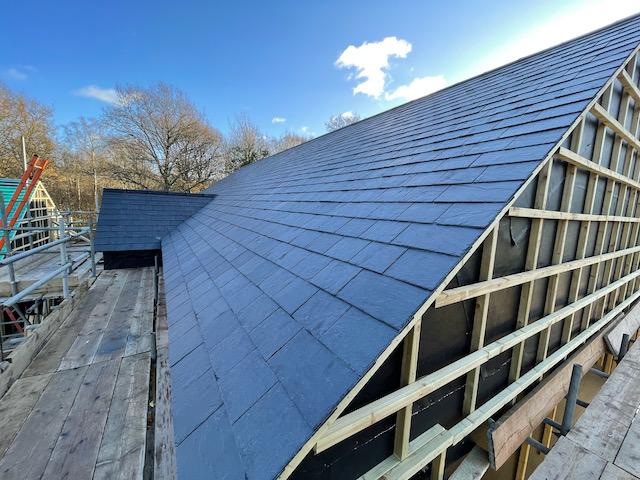

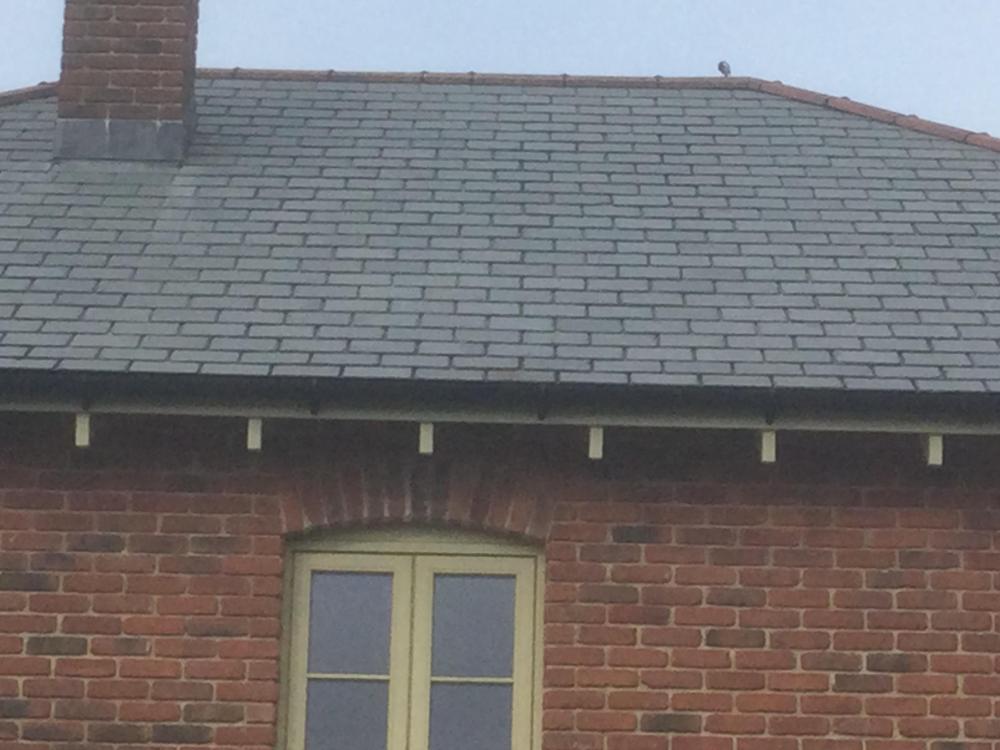




.jpg.c21f3ac78c9b7efd90cbdcb312744dc5.thumb.jpg.7adcad4c0e384f5ecd7d56b0618df6e5.jpg)
